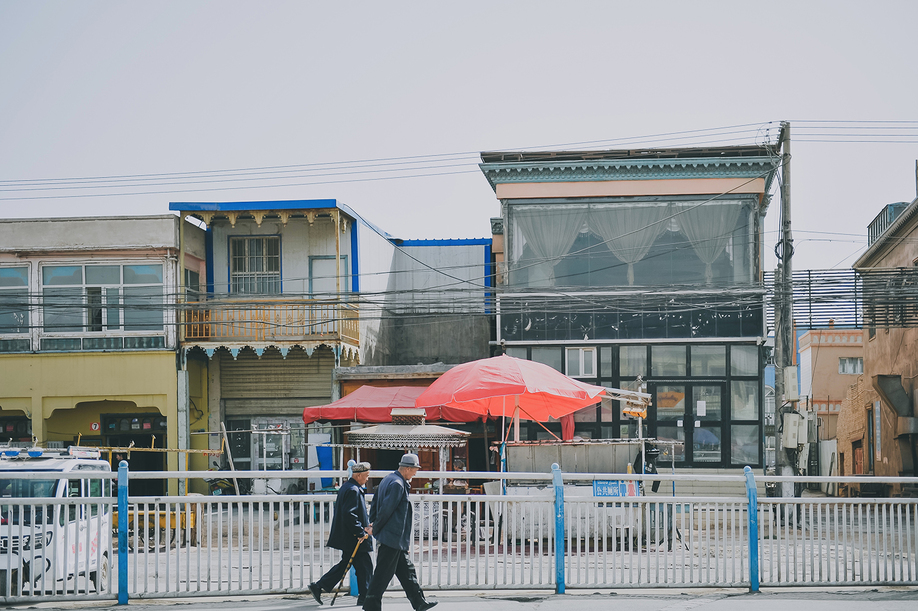

Gates guarded by police stands surround these few blocks that are left of the old town in Kuqa, Xinjiang. This area was not too far from my hotel and, used to traveling independently, I wondered what would happen if I left to try to explore without the assigned “guides.” It took me 15 minutes to get into the area behind the bars, then another 15 minutes to get through another checkpoint across the street where some Uyghurs were trying to sell goods. When I left the area to stand between them to take this pic, I was stopped several more times by police officers and questioned heavily about what I was doing and what was on my camera. I was not Uyghur so had permission to “travel freely” in comparison to others behind the gate. The second day I wanted to return here with my government minders and was told that I could but was forced instead to sit for hours in a hot car on a suddenly closed road until after dark. Upon getting home to the US, I read similar stories of other visitors having roads closed for long periods of time and their itineraries suddenly changed.
A Cultural Genocide: Persecution of the Largest Minority Group in China
Photographer: Amy Siqveland
Exhibit Title: A Cultural Genocide: Persecution of the Largest Minority Group in China
Location: China
China has launched an extensive campaign to effectively eradicate true Uyghur culture in Xinjiang. This includes placing 1-3 million people into internationally recognized concentration camps, using comprehensive electronic surveillance, quartering of government officials, and the banning of religious worship and dress. China contends that the camps are for vocational training purposes, and are measures to combat violent Islamic extremism and separatist ideas. Leaked documents show they are being used to institutionally brainwash and crush the native Turkic-speaking population. Reports of sterilizations and torture are rampant. As all external communication is monitored and immense pressure is used, relatives outside the camps and Uyghurs who have fled abroad do not speak publicly about what is happening for fear of repercussions to loved ones there. In 2019 I visited 8 towns in Xinjiang and witnessed the cultural liquidation. My essay focuses on the purposeful destruction of the unique housing and businesses that made up the ancient Silk Road cities and shows how they, in turn, have been replaced with small Potemkin villages, Disney-esque theme parks and artificial bazaars that now lack any of the traditional character and history.
I shoot photographs because I believe art can be one of the most important mediums for exchanging dialogue and creating change. I'm a former social worker and am passionate about human rights issues, environmental conservation and the empowerment of women and marginalized communities. I believe in using my camera as a grassroots tool to both honor hope and fight oppression in a nonviolent manner.
www.amysiqveland.com
Make Comment/View Comments